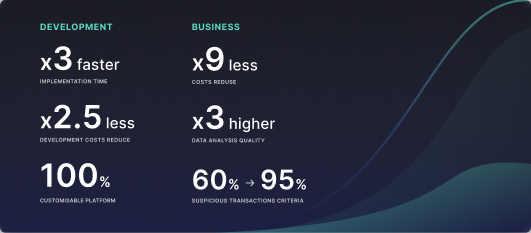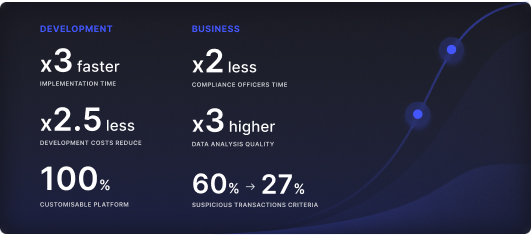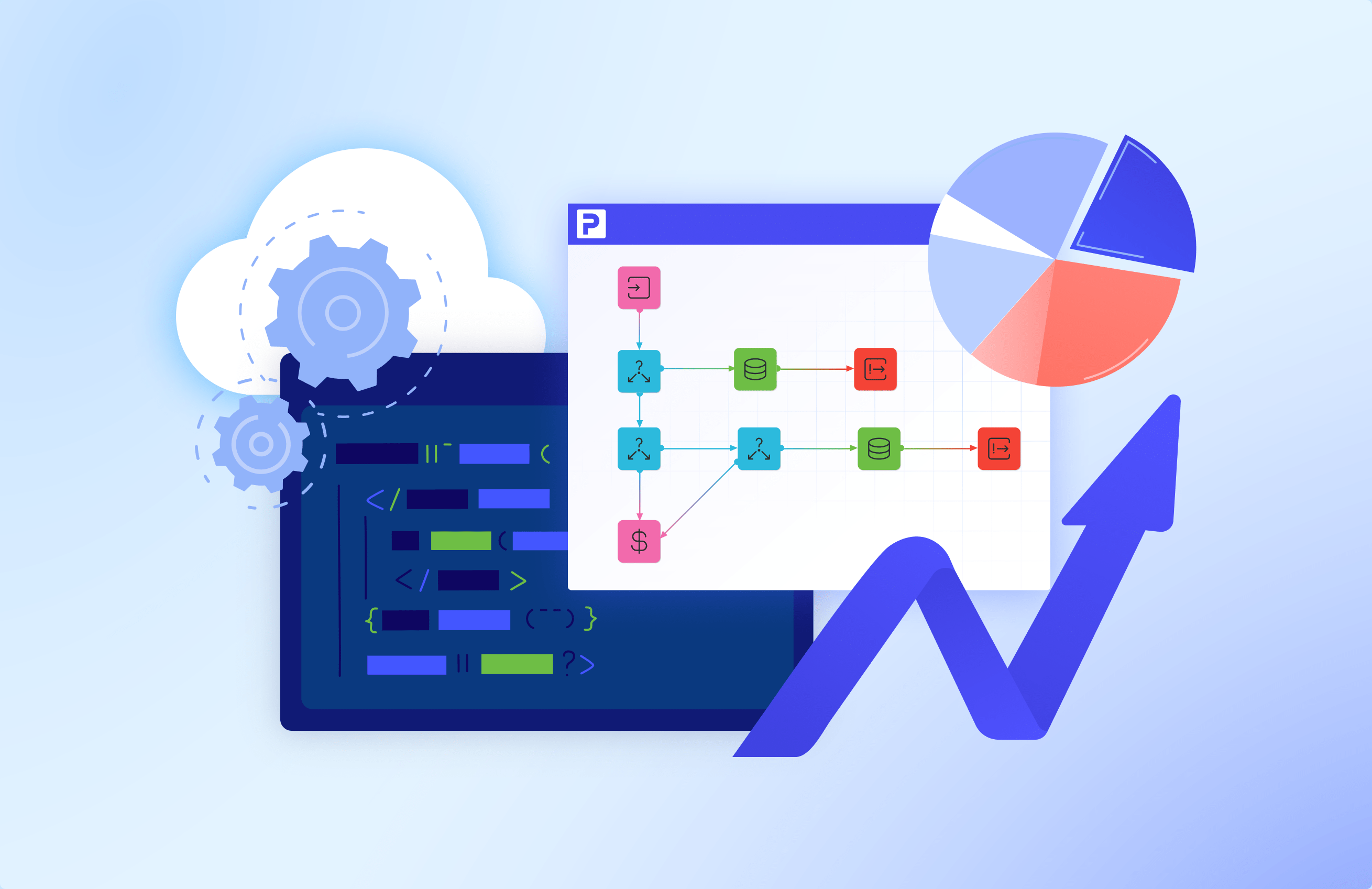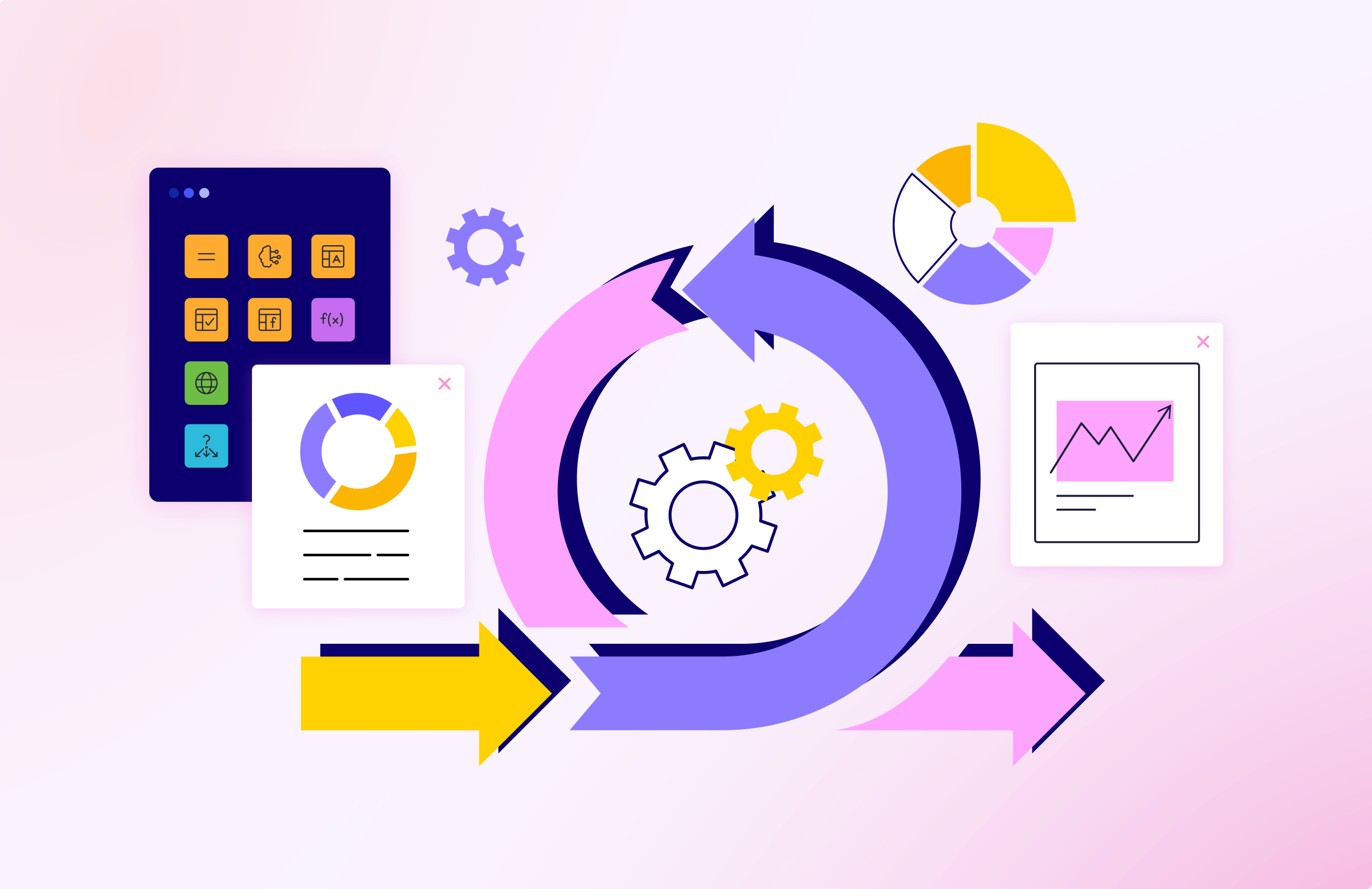The future of banking with low-code platforms: trends to watch


The FinTech industry is developing at a never-before-seen pace. The amount and power of the technologies that banks need to use has become a matter of survival in the highly competitive market. Process optimization and economic pressures motivate bankers to invest in automation tools, personalized customer-facing apps, and risk-management solutions at a growing rate.
According to Grand View Research, the banking software development market will reach $21 billion by 2030. At the same time, there are not many high-level professionals capable of making banking systems development a reality, and if you manage to find a team, it might prove costly. That’s why low-code development has become a lifeline for banks urgently needing digital transformation.

In this article, we will reveal how low-code platforms assist banks to enter the new age of financial digitization and automation. Here is what point we touch upon:
- What is low-code development?
- What features make low-code platforms the future of banking software development?
- Types of banking software you can build with low-code platforms
- Trends in banking software development dictate the direction of FinTech technologies development.
What is low-code development?
Low code refers to a visual software development approach combined with manual coding capabilities. Low-code platforms include pre-made code components, drag-and-drop functionalities, and graphic connectors that facilitate the software development process. With these low-code features, the app creation process boils down to compiling the parts of the pre-made infrastructure. In addition, low-code platforms enhance custom parts development with IDEs, embedded testing tools, developer assistants, etc.
There are various low-code platforms that focus on banking software development. They have their own peculiarities but, in general, low-code platforms are capable of producing sophisticated software for financial institutions. For example, the ProcessMIX platform was originally created for banking software bank-end development. It means that with ProcessMIX, users can build process automation tools, data management applications, risk management, transaction and loan processing software, and many others. ProcessMIX has the premade architecture for these solutions and allows citizen developers to create solutions that work for them.
Why is low-code the future of banking software development?
Let’s take a closer look at low-code advantages when it comes to banking app development and core system enhancement. There are several reasons for the rising popularity of low-code development for banking software development, these are but a few of them:
Faster time-to-market
Owing to pre-made code, visual development functionalities, and enhanced CI/CD tools, low-code platforms speed up banking software delivery processes by several times. Low-code platforms cover the full cycle of banking app development including production, testing, debugging, integration, and deployment. Cloud-based low-code solutions allow banks to deploy applications instantly in the cloud.
Availability
One of the most appealing advantages of low code is its availability for citizen developers. Non-IT bank employees can create banking apps and maintain them with simple platform-specific low-code training. Any low-code provider worth its salt offers staff training courses, video instructions, and user guides. As a result, low-code platforms allow banks to reduce IT costs and empower your staff.
Easy integrations
Low-code apps are easy to integrate with databases and APIs. Due to the premade connectors, the low-code app integration process takes only a few minutes. Most low-code platforms for banking apps development include connectors to a variety of 3rd parties that are popular among the major banking institutions and cover:
- ERP systems
- Customer portals
- Social media
- BPM software
- BI systems
- Payment services.
Flexible apps
Low-code apps are easy to change as the bank develops or updates its business strategy. Domain workers can adjust the parameters of the low-code banking applications by clicking on the components and entering the necessary data. At the same time, the low-code apps are easy to scale with reusable code components.
Reduced costs
The speed of the development and availability of low-code development tools allows banks to reduce overall banking software development costs. With low-code platforms, bankers can save on professional developers hiring and further application maintenance.
Types of banking applications you can build with low-code
Client-side applications
Mobile banking application is a must for a bank seeking to progress. Today’s mobile banking applications should give customers a wide range of operations to initiate in a few taps. Low-code platforms allow banks to build apps with loan origination, transaction quality control, personalized accounts, and other advanced features. To make most of such features work, banks need to integrate the app with several 3rd parties. If you already have a mobile app, you can create low-code supplementary tools and integrate them with the new tools. Low-code client-side banking apps allow a bank to integrate with analytics services and improve customer profiling.
Customer scoring tools
Low-code platforms allow banks to build applications, enabled with AI-powered data analytics. It allows banks to perform better scoring, analyzing the data, and setting the customer evaluation parameters. Low-code platforms also are embedded with scoring engines. They allow banks to build scoring rules and calculation functions fast for borrower and prospect scoring.
Automation software
Low-code platforms for back-end development allow banks to create automation solutions on short notice. Low-code platforms for banking automation software development employ advanced technologies like AI, ML, and RPA to drive precise task execution.
Besides, low-code platforms that can produce automation apps for banks work with business rules and scoring engines. These methods allow bankers to easily implement their business strategy with automation tools. To build an automation flow in a low-code platform with BRMS (Business Rules Management System), a user should only choose from pre-made components and set the parameters (or rules) for each step of the automated process.
AI-powered risk management solutions
Low-code platforms for banking tools development allow users to build powerful risk management solutions. With low code, bankers can quickly create fraud detection, transaction control, KYC, and other tools. The low-code platform allows banks to quickly integrate risk management and security software with the existing bank’s infrastructure, keeping it secure.
Chatbots
Low-code platforms that use AI allow bankers to improve their customer service with smart chatbots. The low-code banking chatbots are able to answer frequently asked questions and redirect clients to the necessary specialists.
Blockchain-enabled apps
Blockchain technology allows banks to make large transactions and pay less commission to traditional services like VISA and MasterCard. Some low-code platforms allow banks to build applications connected to secure blockchain frameworks. The most popular blockchain integration among banks is Ripple, Ethereum, Bitcoin, etc.
Low-code banking software development trends
Service digitization
Banks strive to digitize their documentation and related processes to enhance operational productivity. Big data tools allow us to make sense of large volumes of data generated during the processes. Digitization speeds up the internal processes making documentation easy to duplicate and use across different banking system parts.
Hyper-automation
Banks are hungry for operational efficiency and process automation. The big resignation and pandemic sparked a renewed interest in automation among enterprise-level banks, driving this even further. Financial institutions automated decision-making and other processes to enhance loan origination, routine task execution, risk management, and other crucial banking operations.
Better customer service and personalization
Banks now invest in client-side applications capable of providing a more personalized experience to their customers. These financial organizations are striving to integrate and analyze data from as many sources as possible. Social media, registers, and other valuable data sources now enhance marketing strategies and risk management in the banking sector in a whole new way.
Enter the future of banking with the ProcessMIX low-code platform
ProcessMIX is a back-end development low-code platform. Initially, the platform was developed for the banking industry’s needs but has evolved to be a helpful tool across many industries.
The platform includes functionalities and customizable components for credit decision-making engine development, AI-powered fraud detection tools, borrower scoring engines, banking data management, online support, and more. Need the freedom to build your solution your way? Look no further than ProcessMIX.

The platform allows users to create automated credit decision-making flows, complex borrower scoring, transaction security control apps, calculation, and risk-management apps.
You can try to use the platform right away with a free ProcessMIX demo. It will allow you to evaluate the platform and see if it fits your credit system development project requirement. If you have any questions regarding loan processing software development with ProcessMIX, you can contact our team or read our comprehensive User Guide.
 Visual Development
Visual Development Assignment of risk level and customer category within KYC processes at customer onboarding
Assignment of risk level and customer category within KYC processes at customer onboarding Cross-Sell Offer Calculation for the 12M Client Base
Cross-Sell Offer Calculation for the 12M Client Base


